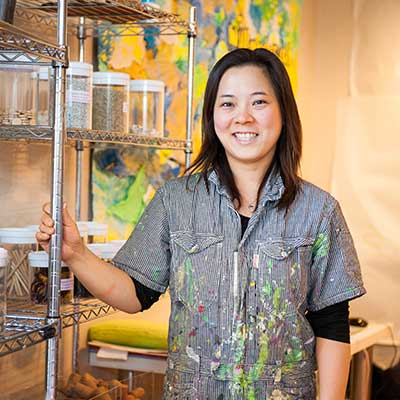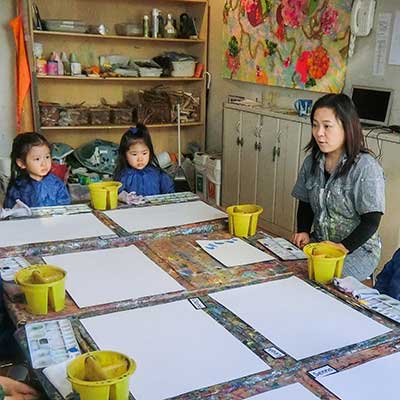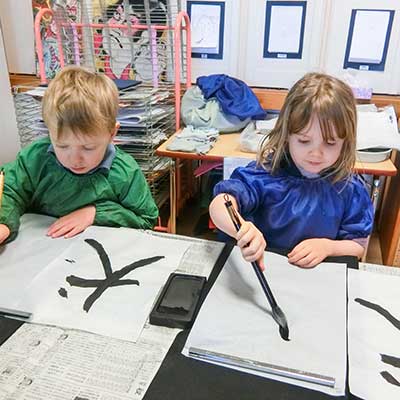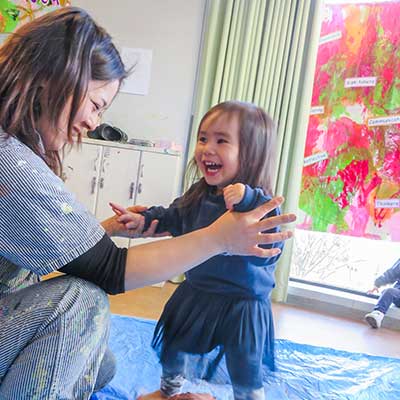Creative Arts
Art is the medium through which we advance thinking and explore children's creativity. Given the young age of our students, we utilize their interest-level and attention-span to engage in and attend to an activity. Art is incorporated seamlessly into the everyday classroom curriculum and facilitated by our innovative teaching staff.
Art Studio
We have purposefully designed our spacious Atelier (or art studio) to inspire creativity. Our shelves are lined with clear plastic containers with a variety of natural (seed pods, stones, wood chips, etc) and recycled (glass beads, buttons, bottle tops, etc) materials. We value the intrinsic nature each child's creative and artistic ability. Our Atelier reflects an active and ongoing engagement in our work. Materials are carefully chosen for each project and are often prepared and set out for the next day. There are many "works in progress" around the room due to our focus on projects that are completed incrementally. By invoking a consistent effort in children at an early age, projects completed in stages often yield a grander scale endeavor and therefore a more valuable experience.
Project-Based Work
In a project approach to art, our dedicated art teacher (Takako Sato) has students begin an art activity at the start of the week, and add the finishing touches on the last day or even a week later. Each day, students employ a different medium, adding elemental depth and texture. For example, the first day may start with a pencil drawing and then on subsequent days students add marker, paint, tissue paper, cellophane, seeds, sticks, grass, leaves, dried flowers, etc. All are layered to reveal a multi-media 3-D effect. Art is an exploration of sensory experience. Early learners benefit from tactile touch so we try to use materials that are fundamentally textural.
Multiple Mediums
Students can also expect to enjoy many forms of art. In addition to drawing, we incorporate dramatics, dance and science. For example, the lights are turned down and we use a projector to engage in dramatic shadow play. Students pretend to be an animal of choice, moving to explore shapes in shadows. They then draw the animal in action.
Spring Show
The annual spring show is another opportunity for students to showcase their creative energy. Each class puts on an annual performance, such as a skit, song, or other performance. Many classes encourage the students to design and create costumes and plan the script. Students perform on stage at an off-campus venue for an audience of family and friends.
Japanese Culture
Cultural art is initiated around seasonal holidays, and students make a variety of crafts to celebrate special days such as Shichigosan (coming of age for 7-5-3 year-old children), Oshougatsu (New Year), Setsubun (bean-throwing festival), Hinamatsuri (doll festival) and Kodomo-no-hi (children's day). Students also practice oshuuji (Japanese calligraphy)at various times throughout the year.







